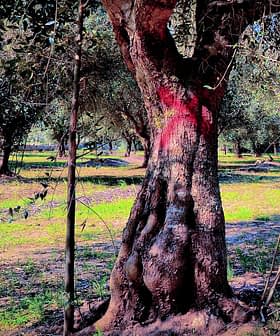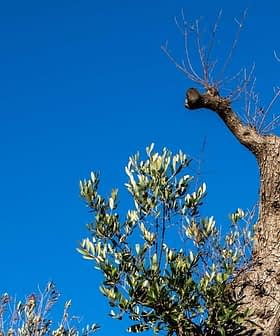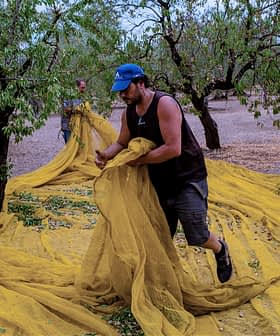A research team from Texas A&M University in College Station, Texas, has created a cocktail of four different phages (viruses of bacteria) which they used to treat grapevines affected by Pierce’s Disease (PD). The disease is caused by the Xylella fastidiosa (Xf) bacterium that has attacked olive groves and devastated the olive crop in the Puglia region of Italy.
See Also:Complete Coverage of the Xylella Fastidiosa Outbreak
Pierce’s Disease is spread by sharpshooters, a type of large leafhopper insect which feeds on the xylem of plants, has caused extensive damage to vineyards in California.
The scientists created the phage mix by combining four virulent phages which they tested on grapevines. The results of the study published in Plos One Journal, “Control of Pierce’s Disease by Phage,” revealed that Xf levels in the grapevines they treated with the cocktail were significantly reduced.
The phage cocktail was used both as a therapeutic treatment to treat the disease as well as a prophylactic treatment to prevent the disease from occurring. They found that symptoms of PD were controlled only one week after treatment, while no symptoms occurred in the plants that received the preventative treatment.
Having successfully treated grapevines affected by Pierce’s Disease, there may be the potential to use a similar approach to treat and prevent Xf infections in olive trees. Carlos Gonzalez, one of the authors of the study, is optimistic: “At this time we can only speculate since we have not been able to test the Xylella fastidiosa strains from Italy,” he told Olive Oil Times.

Dr. Carlos Gonzalez, Texas A&M University
“However, based on our results with grapevines and the genetic similarity of the olive strains, the phages have a high probability of working (on olives). Laboratory experiments have already confirmed that Xylella fastidiosa subspecies causing almond, oleander or coffee leaf scorch are sensitive to our four cocktail phages. The only way to really know is to do the experiment with appropriate Xylella fastidiosa strains from the diseased olive trees.”
The use of this potent phage cocktail could be a breakthrough since there has been no way to prevent or treat the diseases caused by Xf, and the only effective control was through the use of insecticides.
Carlos Gonzalez explains why this is not ideal: “The primary defense against Xylella fastidiosa diseases has been the use of neonicotinoid insecticides against the insects that spread the bacteria. However, the European Commission has banned these chemicals because of chronic and acute effects on bee colony survival and development. In 2013, the US Environmental Protection Agency issued labeling requirements warning of the danger these insecticides pose to pollinators and this year announced that new applications for their outdoor use are unlikely to be approved, pending the outcome of an ongoing EPA review of the effects of the neonicotinoids on bee development.”
“These events,” Gonzales explained, “in parallel with the growing threat of Xylella diseases to important crops, add new urgency to the development of natural treatments for this bacterial pest. Clearly, our phage cocktail offers an environmentally-friendly, effective, and sustainable biocontrol treatment for diseases caused by Xylella fastidiosa.”







